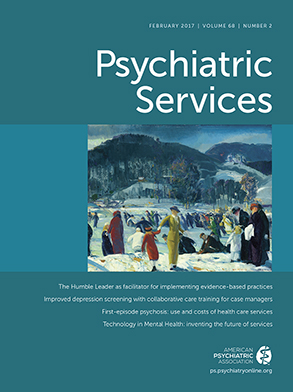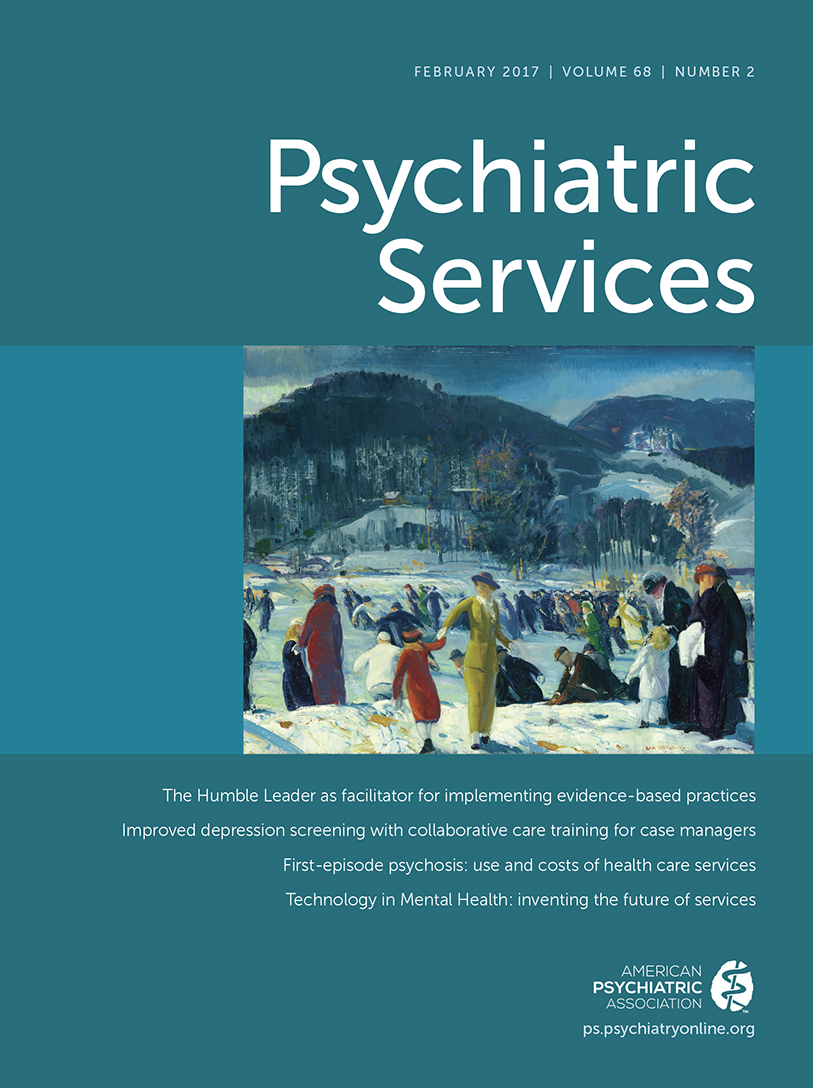We are witnessing technological breakthroughs that create exciting opportunities to improve the outcomes of people with mental illness. Most readers will remember a time before the Internet, e-mail, and social media—resources that are commonplace today. In just a few short years, we have made enormous advances in our ability to store, process, and access digital information in all fields, including entertainment, commerce, and health care. We have seen phenomenal progress in sensing and imaging capabilities and remarkable global penetration of mobile phones and mobile-cellular infrastructure. Digital technologies are now within the reach of the vast majority of the world’s population, including people with severe mental illness.
Revisiting the Parameters of Research and Practice
Technological resources can help enhance mental health services by creating new pipelines for dissemination of evidence-based practices and by expanding the reach of potent care. On its own, this would have tremendous value for individuals with mental health problems, clinicians, and health care systems. However, we must consider that our existing models of care are intrinsically linked with the limitations of the technologies we have had at our disposal. For example, most treatments require people to make their way to brick-and-mortar clinics, during office hours, to seek specialty services, even when their behavioral health challenges may serve as direct barriers to engagement in this type of care. Clinical assessments often rely on a retrospective record of an individual’s mental health and functioning, even when recall bias is at play and when some individuals with mental health problems have significant deficits and variation in cognition and emotion, compromising their ability to provide accurate and representative reports of their experiences. Psychotherapy and rehabilitation approaches generally are built around the premise that people are willing and able to engage in one- or two-hour sessions, learn about and acquire major life skills in artificial clinical settings over months or years, and then apply them successfully in their daily lives in the real world.
Even more than augmenting and extending existing resources and services, new digital software and hardware may enable us to redefine the very nature of mental health care by building on research, intervention, and prevention approaches that emerge from novel technology–informed scientific paradigms and clinical frameworks that focus on continuous and seamless data collection, delivery of services in the environments in which people negotiate their lives, and interventions that are administered in dosages, frequencies, and formats that better fit the capacities and characteristics of individual patients rather than the office hours or staff composition of the nearest clinic.
Inventing the Future of Mental Health Care
Technology is not a panacea. Effectively treating mental illness and delivering mental health services are complex and multifaceted challenges. New technology may offer us some novel solutions. We now have the capacity to engage with people digitally, in real time and in “real place.” We can record objective behavior and functioning in unobtrusive, practically invisible ways by using sensors that are embedded in people’s personal technologies or that are positioned in their physical environment (for example, motion detectors placed in an apartment and Bluetooth beacons strategically positioned throughout an inpatient unit). We can create and support virtual communities of people who may be hundreds of miles or continents apart by using widely accessible social media platforms or tailor-made Web communities hosted by health care systems and clinics and moderated by trained facilitators. We can build tools that allow for self-assessment and self-management, offering their users the opportunity to modify and tailor treatments to their individual goals and needs as they change over time. For example, individuals can update the motivational content used in a smartphone intervention for psychosis (photos and affirmations) as they progress in their personal recovery plan, or they can increase the intensity of images used for computer-delivered exposure therapy on the basis of their readiness (for example, from the written word “spider” to videos of a tarantula).
We can continue to use spoken or written language for technology-assisted services, but we can also expand the scope and dimensions of interventions by leveraging modalities that engage and convey information nonverbally through sight, sound, and touch. For example, mobile phone vibrations that notify the user of an incoming text message can also be used as a prompt to engage in mindfulness exercises in the context of an e-intervention. We can leverage computational capacity, individual-generated data, informatics, and signal detection to try to identify at-risk individuals who may benefit from support in a time-sensitive and targeted manner. We can overhaul clinician training so that it capitalizes on digital educational tools, and we can create new roles for professionals in the digital health system.
There will likely be a need for clinical technology specialists who can serve bridging functions—on one hand, connecting patients with the most suitable technological tools, and on the other, supporting and training their clinicians who may not know how to make optimal use of the platforms their patients are using or the new forms of data patients may elect to share with them. We can develop new types of clinicians and researchers who harness the expanding arsenal of technological resources to improve the lives of those who struggle with behavioral health challenges. We may be able to retire the waitlist; in an era when Web-based or downloadable mental health support can be accessed 24/7 from anywhere on the planet with Internet connectivity, asking people to languish with no care until in-person–delivered care is available in their area can become a relic of the past.
The parameters of mental health screening, monitoring, and treatment will change hand in hand with the opportunities created by breakthroughs in technology industries. The evolution of the mobile health (mHealth) field is an instructive exemplar. When basic cell phones with short message service (SMS) capabilities started to appear broadly, health care interventions using texting for medication prompts and other notifications emerged. As mobile phones became “smarter” (that is, with greater computational capacities, Internet access, and media players), interactive downloadable and Web-based self-directed health apps started to appear, using the full array of what smartphones have to offer—engaging graphics, audio and video content, and game functionality. Since the introduction of embedded sensors in smartphones (for example, GPS and accelerometers), passive sensing technology is increasingly being integrated into treatment software for context-aware and sensor-triggered interventions. The time between when a new invention becomes public and when it starts to appear in health care–related initiatives is now shorter than ever. This is hardly accidental; the scientific research and health care communities are now keenly aware of new technological developments and more streamlined approaches to gaining access to them. This process is certainly encouraged and often initiated by commercial companies who reach out to medical centers and university investigators as first adopters of their innovations as a method for testing, dissemination, and marketing.
With novel opportunities come new challenges. Patients and providers will need to weigh acceptable known (as well as perpetually evolving) risks and benefits of using new technology for mental health services. Patient privacy and data security become more vulnerable when they are no longer contained by measures implemented in a physical clinic. The client-clinician therapeutic alliance will be affected by the introduction of telecommunication and telemonitoring technology, as well as by new personal preferences and expectations. With greater involvement of commercial entities in the mental health arena (for example, vendors of patient portals and electronic health records, clinical software developers, and medical device companies), there will be a need to distinguish between hyperbolic marketing claims and genuine demonstration of feasibility and clinical utility. Billing and reimbursement models will need to accommodate new service delivery modalities. Research, product, and professional regulatory standards will need to evolve to remain relevant—guiding ethical and responsible use of technological resources while allowing for clinical innovation.
A Call for Creativity in Research, Practice, and Policy
With this as the historical backdrop, I am excited to have been invited to serve as the inaugural editor for the new column on Technology in Mental Health in
Psychiatric Services. I invite the community of researchers, clinicians, advocates, payers, policy makers, and individuals with lived experience to submit manuscripts (
https://mc.manuscriptcentral.com/appi-ps) focused on technology-based or technology-assisted approaches in the assessment, treatment, monitoring, or prevention of mental health problems (for example, mHealth/eHealth, decision support tools, wearable devices, social media, clinical informatics, training programs, and reimbursement models). My intention is not to focus solely on information technology. The new column will be an ideal venue to expose readers to innovative technologies or innovative strategies for using existing technology, broadly defined, to improve mental health outcomes. Submissions may include (but are not limited to) informed opinion pieces, empirical efforts (for example, deployment in the context of real-world care and proof-of-principle studies), conceptual overviews, relevant discussion of policy, and first-person accounts from users of technology in mental health (patients, providers, administrators). I encourage authors to explore, debate, and demonstrate how we may capitalize on and build new technologies that will redefine the field by generating new science and practice.

